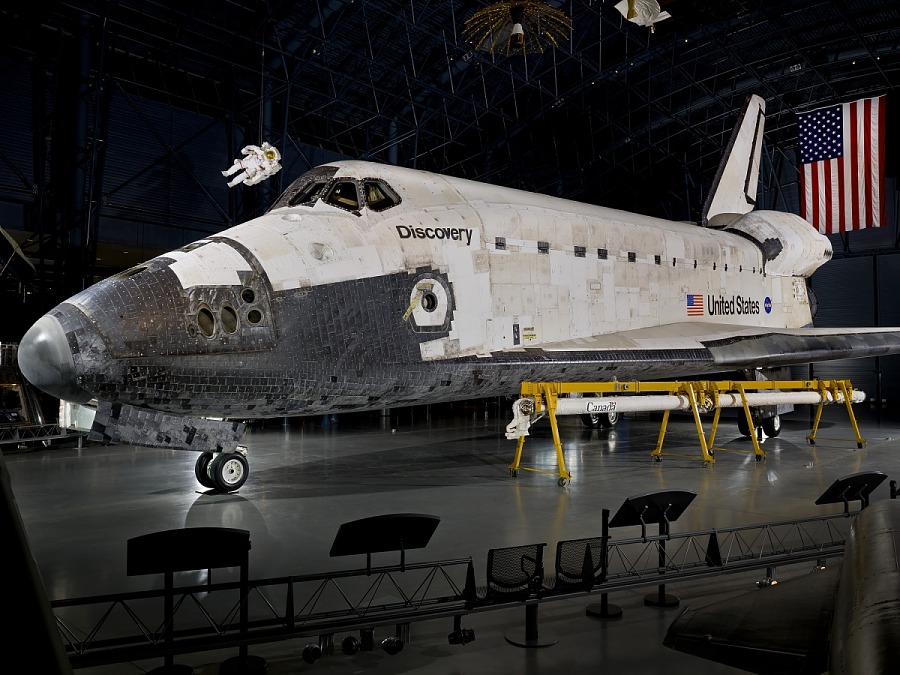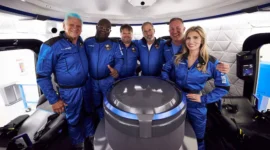Washington D.C. / Houston, Texas – July 4, 2025 – A significant and controversial provision buried deep within President Donald Trump’s recently signed “One Big Beautiful Bill” has allocated $85 million for the relocation of the iconic Space Shuttle Discovery from its current home at the Smithsonian National Air and Space Museum’s Steven F. Udvar-Hazy Center in Chantilly, Virginia, to Space Center Houston, the official visitor center for NASA’s Johnson Space Center in Texas. This news, confirmed on July 4, 2025, after the bill was narrowly passed by Congress and signed into law by the President, marks a culmination of persistent efforts by Texas senators to bring a retired space shuttle to the “Space City,” a move they argue is long overdue given Houston’s pivotal role in human spaceflight.
The “One Big Beautiful Bill,” a sweeping piece of legislation encompassing various domestic policy initiatives, including infrastructure upgrades, border wall funding, and tax relief, became the unexpected vehicle for this high-profile space artifact transfer. The provision, strategically worded to avoid Senate restrictions on reconciliation bills, does not explicitly name Space Shuttle Discovery but refers to a “space vehicle” that has flown into space and carried astronauts, to be transferred to a NASA center involved in the Commercial Crew Program and displayed publicly within its metropolitan area. This carefully crafted language was designed to advance the “Bring the Space Shuttle Home Act,” initially introduced by Texas Senators Ted Cruz and John Cornyn in April 2025.
For years, Houston has expressed discontent over not receiving one of the retired Space Shuttles when they were dispersed to museums across the country following the program’s conclusion in 2011. The decision by NASA at the time to send orbiters to Florida, California, New York, and Virginia, reportedly based on projected visitor numbers and existing infrastructure, left a significant void in a city synonymous with human space exploration and mission control. Senators Cruz and Cornyn have championed the idea that Houston, as the heart of America’s human spaceflight program, rightfully deserves to host such a historic artifact, arguing it would honor the city’s legacy and inspire future generations.
The $85 million allocated in the bill is intended to cover both the transportation of Discovery and the construction of a suitable facility to house it at Space Center Houston. Of this amount, “no less than $5 million” is specifically earmarked for the transportation itself. However, the proposed move has sparked considerable debate and opposition, primarily from the Smithsonian Institution and other critics. The Smithsonian has stated that it would be “unprecedented” for Congress to remove an object from its national collection, noting that Discovery was formally transferred into the museum’s perpetual ownership in 2012.
Furthermore, the Smithsonian’s own estimates for the cost of moving Discovery are significantly higher, ranging from $300 million to $400 million, which includes not only transport (estimated at $50-$55 million, requiring a complex combination of air and ground or barge and ground transportation, and a new purpose-built museum facility in Houston costing approximately $250 million) but also the expense of creating an alternative display at its Udvar-Hazy Center. They also highlight the “significant” risk of damage to the irreplaceable artifact during such a complex transfer.Adding to the logistical challenges is the fact that the two specially modified Boeing 747 Shuttle Carrier Aircraft, which were previously used to transport the orbiters, are themselves now retired museum pieces. This means any relocation would require entirely new, potentially more complex, and costly methods. Despite these concerns, supporters of the move argue that the Smithsonian’s cost estimates are “purposefully overblown” and that outside vendors have provided much lower figures for transportation.
The bill mandates that the relocation of Space Shuttle Discovery must be completed by January 4, 2027. This ambitious timeline, combined with the substantial cost discrepancy and the inherent difficulties of moving such a massive and delicate spacecraft, suggests that the coming months will be fraught with planning, negotiation, and likely continued controversy. While the passage of the “One Big Beautiful Bill” with this provision is a victory for Texas lawmakers and space advocates in Houston, the practicalities and broader implications of removing a national treasure from the Smithsonian’s care remain a subject of intense discussion and will undoubtedly shape the future of Space Shuttle Discovery’s display and accessibility to the public.




